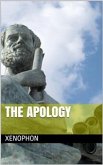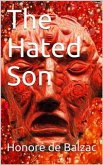Xenophon the Athenian was born 431 B.C. He was a pupil of Socrates. He marched with the Spartans, and was exiled from Athens. Sparta gave him land and property in Scillus, where he lived for many years before having to move once more, to settle in Corinth. He died in 354 B.C. Memorabilia is a collection of Socratic dialogues by Xenophon, a student of Socrates. The lengthiest and most famous of Xenophon's Socratic writings, the Memorabilia is essentially an apologia (defense) of Socrates, differing from both Xenophon's Apology of Socrates to the Jury and Plato's Apology mainly in that the Apologies present Socrates as defending himself before the jury, whereas the former presents Xenophon's own defense of Socrates, offering edifying examples of Socrates' conversations and activities along with occasional commentary from Xenophon. Memorabilia is also known by its Latin title Commentarii and a variety of English translations (Recollections, Memoirs, Conversations of Socrates, etc.). The Memorabilia was probably completed after 371 BC, as one passage (III.5) appears to assume the military situation after the Spartan defeat at the Battle of Leuctra in that year. The Memorabilia contains 39 chapters broken into four books; Book I contains 7 chapters, Book II contains 10 chapters, Book III contains 14 chapters, and Book IV contains 8 chapters. The overall organization of the Memorabilia is not always easy to make out: Book I. After the direct defense of Socrates (I.1-I.2), the rest of Book I consists of an account of Socrates' piety and self-control. Books II and III are devoted largely to showing how Socrates benefited his family, friends, and various Athenians who came to him for advice. Book IV turns to a more detailed account of how Socrates educated one particular student, Euthydemus. It includes an early example (possibly the earliest) of the Argument from Design (i.e. the Teleological Argument) (IV.3, anticipated already in I.4). Chapter 4 gives a related account of Natural Law.
Bitte wählen Sie Ihr Anliegen aus.
Rechnungen
Retourenschein anfordern
Bestellstatus
Storno









